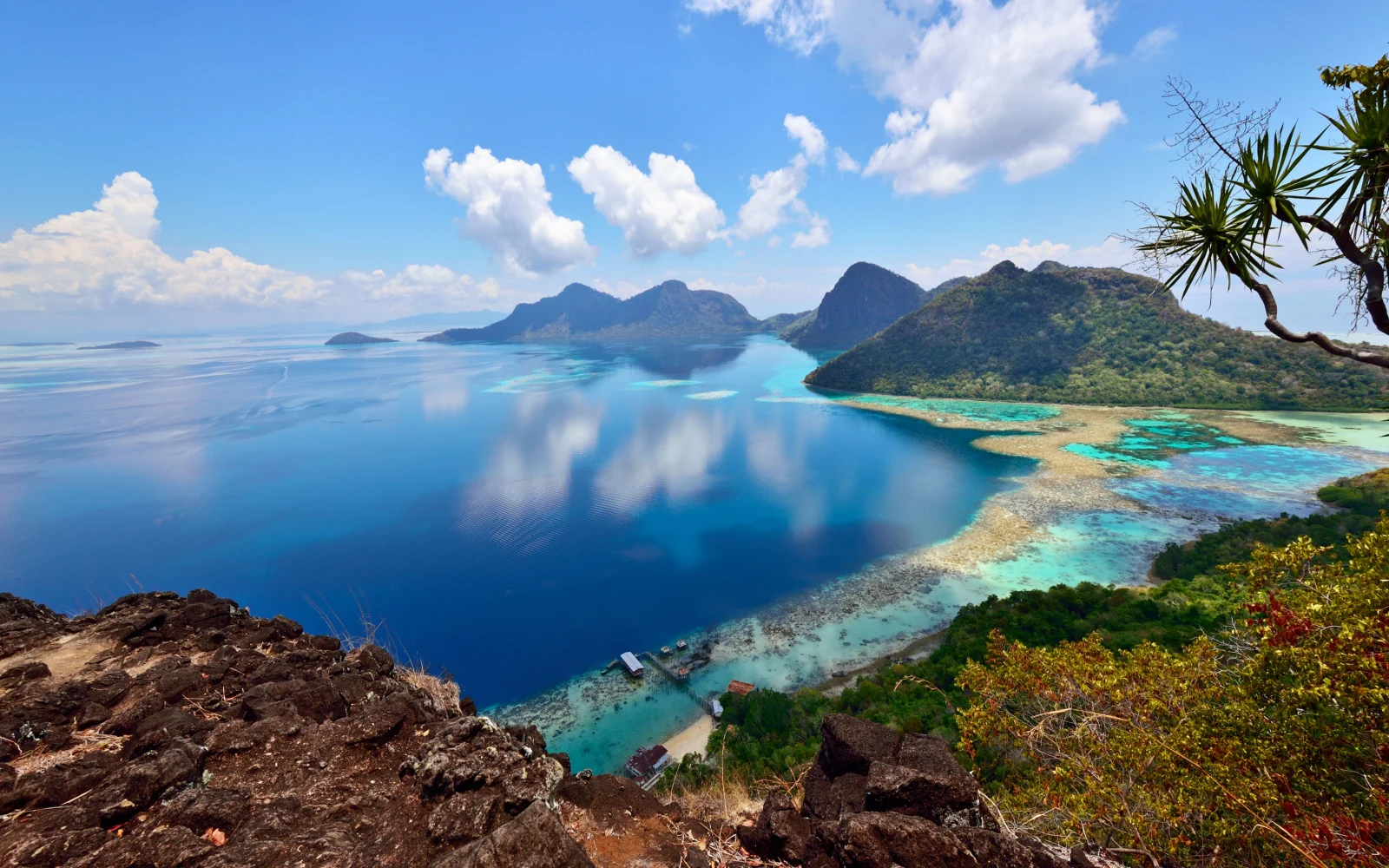What's the best time to visit Borneo?
The best time to visit Borneo is between May and September, which is the peak season with ideal weather for beach activities, safaris, and wildlife exploration. During this period, temperatures range from 86F-95F, and the decreased rainfall makes activities like hiking in Bako National Park and wildlife spotting in Danum Valley more enjoyable.
Wilderness seekers who want to find adventure in island rainforests, mountains, and amazing indigenous cultures need look no further than Borneo.
We’ll look at the best time to visit Borneo for different purposes — enjoying the best weather, finding the most affordable prices, and avoiding big crowds — along with the worst time to visit in this complete guide.
This is a wild and fascinating place on the other side of the world, but if you want the most memorable experience, you’ll need to head down when Borneo’s weather, tourism, and prices cooperate with your goals for the trip.
The Overall Best Time to Visit Borneo
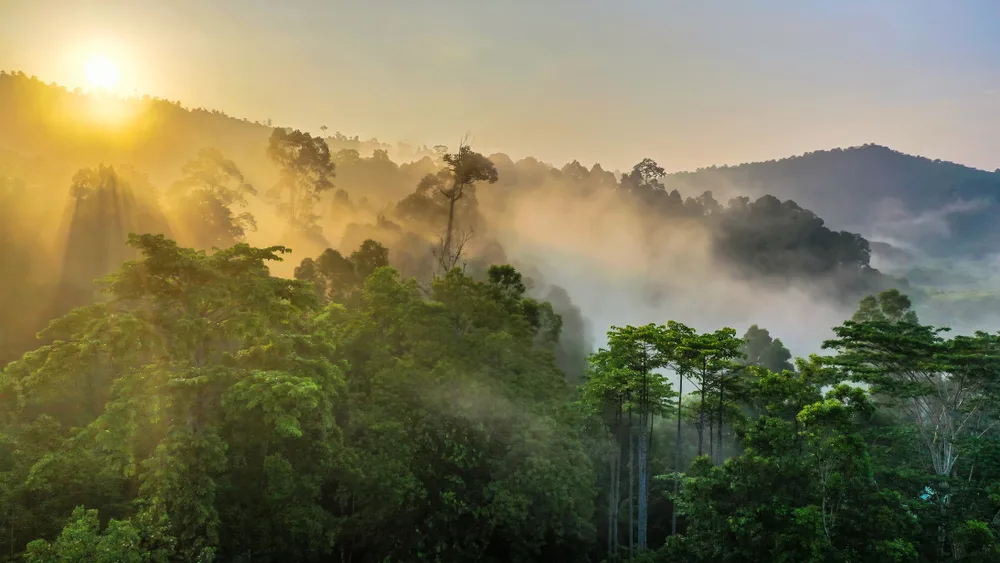
BorneoRimbawan/Shutterstock
The overall best time to visit Borneo is between May and September, which includes the peak season. This is when the weather is ideal for beaches, safaris, and exploration while wildlife is more active in the rainforests.
You can expect moderately hot high temperatures between 90F-95F this time of year in Borneo, peaking in July. It’s slightly cooler in the northern region of Sabah, where mountains shield the area from extreme temperatures and keep things closer to 86F-87F.
Borneo’s dry season isn’t exactly arid — this is a heavily forested island and things stay pretty humid and wet year-round. But from May to September, the rains slack off enough to make hiking through Bako National Park in Sarawak and spending time on the beaches of Gaya Island much more pleasant.
May through September is the prime time to lounge on the beaches of Sabah, to explore the small coastal islands like Lankayan and Gaya, to climb Mount Kinabalu in the national park, to take a fascinating Kinabatangan River cruise, and to go on safari or head off into the rainforest for wildlife spotting opportunities in the Danum Valley.
Orangutans come out to feast on fruit in the rainforests, turtles lay their eggs in droves on Lankayan Island, and whales can be seen migrating off the coast in July, August, and September.
This is a really rewarding time of year to visit if you want to go on safari or spot wildlife as you explore the wilderness. You’ll pay slightly more for a hotel room during this part of the year because it’s the much-awaited dry season.
Here’s how much Borneo 2- and 3-star hotels cost on average each month:
- May: $30-$33/night
- June: $32-$38/night
- July: $34-$37/night
- August: $35-$37/night
- September: $35-$41/night
- October: $44-$48/night
If you’re coming to spend time on Borneo’s beaches and offshore islands, prices will be higher. At the high-end 4- and 5-star beach resorts in Borneo in places like Gaya Island, you can expect the following nightly averages:
- May: $269-$421/night
- June: $317-$439/night
- July: $314-$509/night
- August: $125-$535/night
- September: $282-$467/night
- October: $151-$431/night
You can check out the following festivals and events if you decide to go during the best time to visit Borneo:
- Pesta Kaamatan (May 30-31) is a harvest festival in the Sabah region where locals celebrate and honor ancient legends and history related to rice, a staple food in the culture, with ceremonies, costumes, food, and rituals
- The Harvest Festival (May 31 to June 1) or Gawai Dayak celebrates the Dayak peoples’ history in Sarawak with traditional food and costumes, offerings, a chicken sacrifice, art, and brewed drinks
- Sabah Dragon Boat Race (early June) is celebrated annually with intricately crafted dragon boats racing across the River Milo with native music and costumes adding to the experience along with booths and stalls on Likas Bay
- Rainforest World Music Festival (mid-July) in Kuching is a 3-day festival featuring the musical talents of indigenous tribes with traditional instruments, local food, drinks, and dancing
- Borneo Jazz Festival (mid-July) brings jazz musicians from around the world to Miri, Sarawak for 2 nights of back-to-back performances
- Borneo Cultural Festival (late July) is a massive, 10-day cultural exhibition event on the square in Sibu, Sarawak that honors the island’s indigenous tribes and their customs, traditions, dress, and food
- Hari Merdeka (August 31 to mid-September) or Malaysian Independence Day celebrations begin on the actual holiday (Aug. 31) and extend to Malaysia Day (Sept. 16) with festivals, fireworks, food, dancing, and cultural exhibitions throughout Borneo
- Borneo International Kite Festival (late September) gathers kite enthusiasts and crafters in Sarawak for a high-flying festival of color and flight
- Borneo Sonic (early October) in Kuching, Sarawak is a growing music festival that puts K-Pop artists front and center along with rappers, pop artists, and booths
During the peak months of July and August, you’ll notice limited hotel availability along with higher prices this time of year (especially during July, the traditional festival and holiday month). It’s still well worth it for the improved weather and wildlife spotting opportunities.
Cheapest Time to Visit Borneo
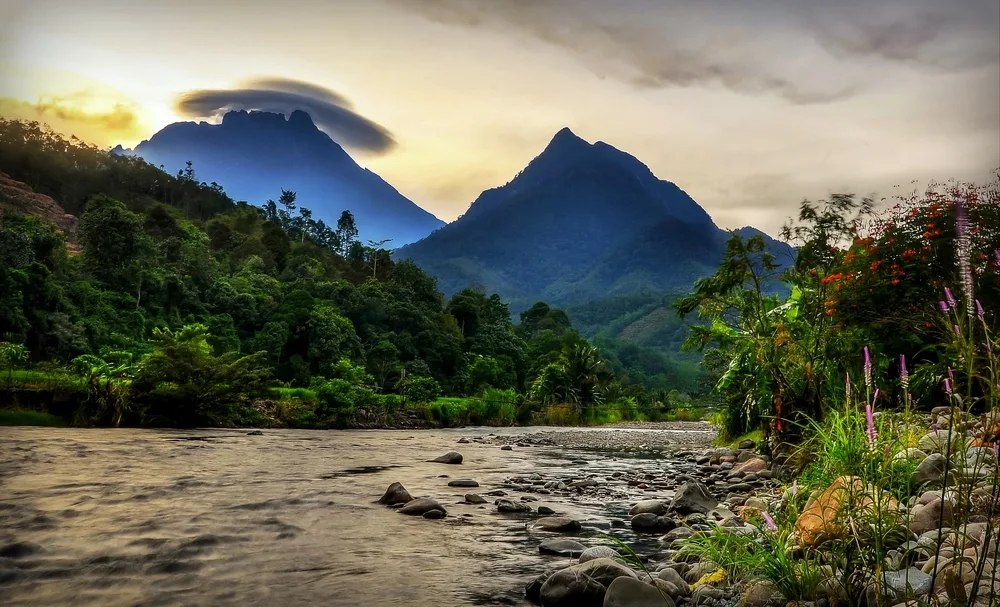
none5999/Shutterstock
The cheapest time to visit Borneo is from November to March, when hotel prices hit their annual low point as the rainy season takes over.
More rainfall means fewer tourists come to Borneo during the wetter period from November to March. As rainfall begins pouring down to the tune of 9″ to 20″ per month, crowds clear out and hotels begin dropping their nightly rates to adjust to the much lower demand.
Here’s a look at how much 2- and 3-star Borneo hotels cost during the cheapest months of the year:
- November: $16-$19/night
- December: $18-$20/night
- January: $22-$25/night
- February: $22-$25/night
- March: $22-$28/night
While it’s never very costly to stay at a Borneo hotel (excluding the luxury beach resorts), you can feel good about saving a little money by staying during these more affordable months when rooms might cost you less than $20/night.
It’s a less accommodating time for some of Borneo’s most popular destinations and activities, like hanging out on the beaches, exploring the rainforests and jungles, or going on safari due to all the rainfall. But the rain does bring one grand benefit to the island: Lush greenery unlike anything you’ve ever seen.
The rainforests, jungles, and mangrove swamps drink up the excess moisture from November to March, exploding in greenery and color as the flora enjoys the most ideal conditions this lively biome could imagine.
You may have a harder time spotting wildlife as the leafy plants block your views, but it’s great for a short, guided hike or Kinabatangan River safari to see the swollen waterways and dense forests this time of year.
You can reliably spot wildlife during this time of year by heading to one of Borneo’s wildlife sanctuaries or rescue centers in between storms.
There are fewer festivals and events during this part of the year because of the rainfall, but here are some ideas to check out:
- Sabah Hospitality Festival (mid-November) has the motto “My cuisine, my culture” and features a huge range of dishes and ingredients that indigenous tribes have used for centuries offered at the local convention center
- Tamu Besar Kota Belud (late November) outside of Sabah’s Kota Kinabalu is a Malaysian festival and open-air market bringing together farmers, craftsmen, and fishermen with a buffalo parade and race, great costumes, and more
- Kiulu 4M Challenge (early December) takes place in Kota Kinabalu, Sabah in Borneo where 4 sports beginning with “M” are played competitively: Manampatau, mamarampanau, managkus, and mamangkar (all involving bamboo)
- Miri Time Square and Gong Xi Bazaar (early to mid-January) celebrates the Chinese New Year in the Miri old city center of Sarawak with costumes, traditional music, dance, food, and more
- Feast of Fortune (mid-January) in Sabah’s International Convention Centre brings a traditional Chinese menu promoting blessings for the new year to guests and revelers
- Borneo Lunar Fest (February) celebrates the Lunar New Year with traditional lion dance, artwork, costumes, street markets, parades, craft workshops, and more in Kota Kinabalu
- Pesta Makan Kreatif Kota Kinabalu (late February) is a giant food truck and vendor festival offering a mix of modern street food twists on native cuisine and traditional favorites that will make your mouth water
- A Taste of ASIAN Ramadan Dinner Buffet (late March to early April) is a huge buffet of over 700 dishes and treats from Royal Malay roots offered to celebrate Ramadan in a fun, communal setting at the convention center in Sabah
Expect to see at least some rainfall nearly every day from November to March when prices are at their lowest, but know that there will be some periods to dry out in between the short, heavy storms.
Least Busy Time to Visit Borneo
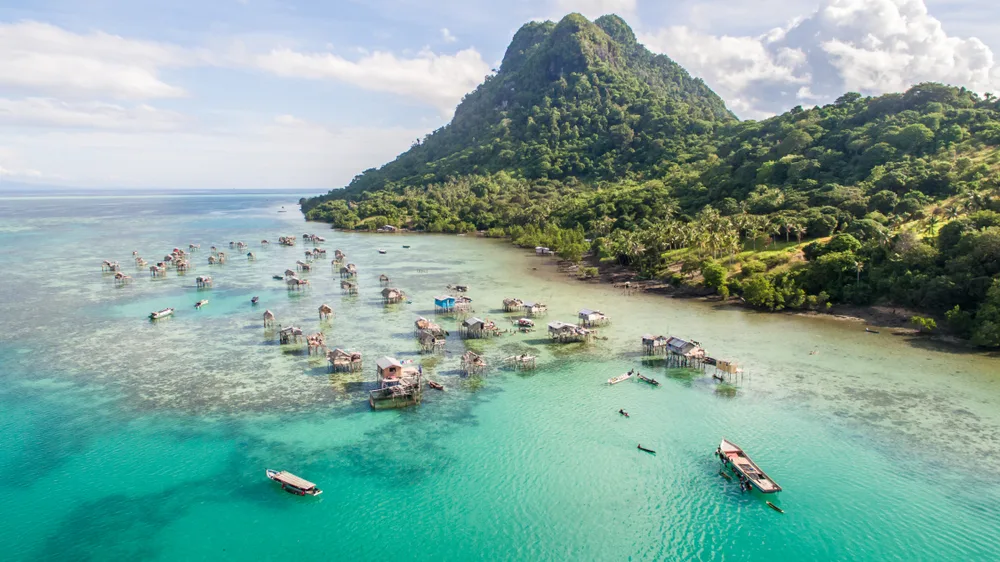
Yusnizam Yusof/Shutterstock
The least busy time to visit Borneo’s most popular destinations is between March and June, before the summer high season arrives and just after the brunt of the rainy season.
Conditions are still somewhat wet in March, April, and June, but things start to clear up as the months roll on toward summer.
Sarawak sees the fewest tourists of the year in April, Kota Kinabalu in Sabah gets very quiet April-June, and popular destinations like Gaya Island are less busy overall during the late spring and early summer months.
The temperatures between March and June remain somewhat steady (as is usually the case across Borneo), reaching highs around 87F-91F in different regions of the island.
It’s definitely hot, but if you’re planning on staying shaded in the rainforest, swimming at the beach, or heading deep into the jungles and wildlife centers, you may not mind the heat as much.
You can expect a sharp drop in precipitation in most parts of Borneo around the end of March, when rainfall may slope from over 18″ to under 10″ in a month. It’s never going to be totally dry in Borneo thanks to the tropical climate, but this less-busy time of year is actually pretty nice in terms of general weather and overall rainfall levels.
Check out the average prices for 2- and 3-star hotels in Borneo during these months of the year — moderate and not too expensive:
- March: $22-$28/night
- April: $26-$30/night
- May: $30-$33/night
- June: $32-$38/night
If you think you’ll be heading to one of Borneo’s beach resorts instead, you will pay more for your room, especially in popular areas like Gaya Island:
- March: $293-$366/night
- April: $287-$430/night
- May: $269-$421/night
- June: $317-$439/night
Soaking up the start of the dry season with fair weather and moderate prices makes it easy to enjoy this less-busy period from March to June when you’re visiting Borneo.
You’ll also find plenty of events and festivals to go to during this season as people get out and about to enjoy the weather:
- Borneo Ultra-Trail Marathon (mid-March) in Kiulu Valley, Sabah takes place each year as runners put their stamina and speed to the test in the beautiful and challenging terrain of the valley
- A Taste of ASIAN Ramadan Dinner Buffet (late March to early April) gives you a chance to dine with the community in celebration of Ramadan with over 700 dishes to choose from in traditional and modern Asian cuisine styles
- Pesta Kaamatan (May 30-31) is a smaller harvest festival in Sabah honoring the use and versatility of the staple ingredient and crop, rice, that is a core part of many Borneo dishes and meals with parades, costumes, food, and more
- The Harvest Festival (May 31 to June 1) is also known as Gawai Dayak and celebrates the indigenous Dayak people with offerings, a chicken sacrifice, parades, artwork, indigenous costumes and dress, and storytelling
- Sabah Dragon Boat Race (early June) is when dragon-adorned boats race across the River Milo in Sabah to see who’s fastest with parades, music, food, and vendors back on shore at Likas Bay
If you’re hoping to sidestep crowds of tourists, the lull between March and June is an all-around great time to visit. You’ll see slightly lower prices on hotels and resorts and enjoy better availability when you’re browsing for vacant rooms and flights.
Worst Time to Visit Borneo
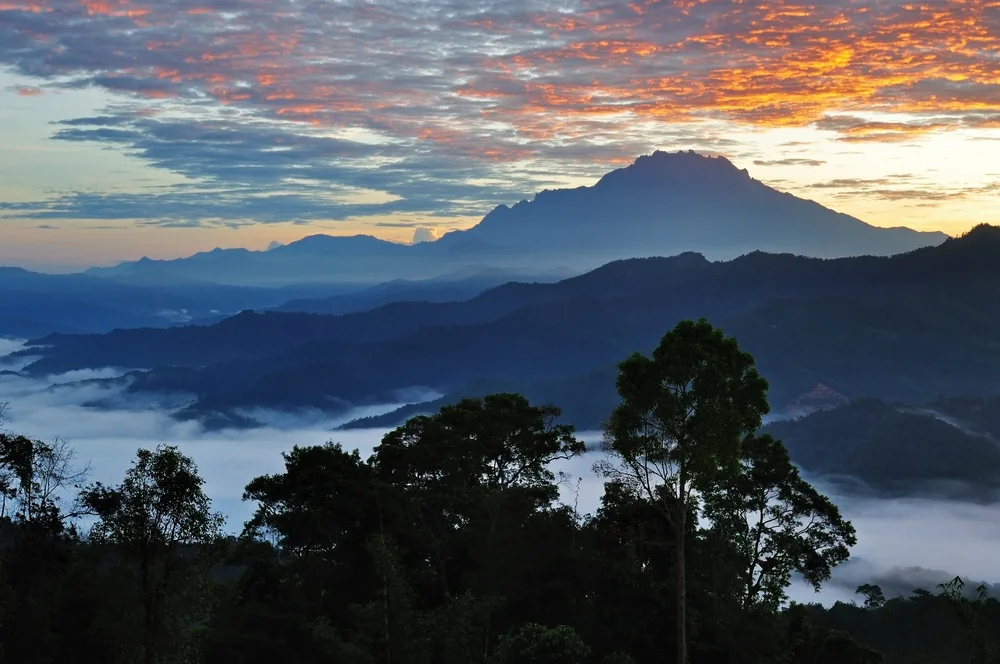
Nokuro/Shutterstock
The worst time to visit Borneo is during December and January, which tend to be the rainiest (and in some regions, busiest) months of the year.
Rainfall is a natural thing across the island of Borneo and it’s what keeps the forests, jungles, rivers, and wildlife thriving. But for visitors, the rainy months of December and January are the worst possible time to go.
You might appreciate the slightly cooler temperatures during these months (84F-88F highs with 71F-74F lows), but at the expense of almost constant cloudy skies and precipitation. Some areas get over 20″ of rain in December alone, though December is drier in some regions (like Kota Kinabalu, where it rains less than 10″ this month).
January isn’t much better in terms of rainfall for Borneo, seeing over 14″ to 18″ of precipitation throughout the month with ever-present clouds that can put a damper on beach trips, rainforest tours, safari cruises, and mountain treks.
While the rain makes visits less enjoyable in December and January, these months tend to bring lots of travelers and hotels can be scarce. The upside to visiting? Prices are lower than average and more affordable.
- December: $18-$20/night
- January: $22-$25/night
There are some open-air markets, sports competitions, and Chinese New Year celebrations that take place in December and January (you can see some of these events under the Cheapest Time to Visit section).
While you might save some money and find a few events happening, the heavy downpours of the Borneo rainy season make December and January far from an ideal time to visit.
Things to Consider
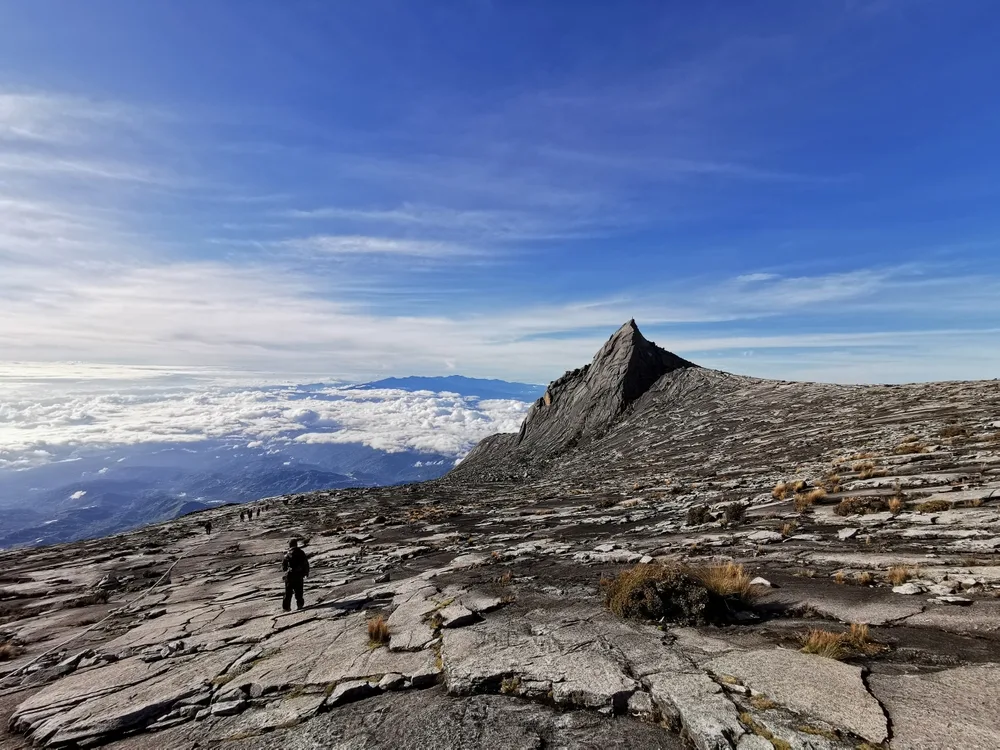
Omkoi/Shutterstock
Making sure to go during the best time to visit Borneo is only one planning step you should take. Keep the following pointers and travel tips in mind to gear up for the best possible Borneo experience!
- Take in the indigenous culture. From the Dayak headhunting history to touring traditional longhouses of the Iban tribe, a huge part of what makes Borneo so captivating is its long and storied past with several indigenous tribes and influences. You can tour indigenous-style buildings, visit historic farms, attend cultural festivals and events, and shop at markets where traditional wares and spices are sold.
- If you really want to explore, book flights. Borneo is a big island and its different regions are so varied that they’re all worth exploring independently. Roads aren’t always the best path to take and eat up valuable travel time, so plan on booking domestic flights to make your way to different regions of the island to save more time for exploring and enjoying yourself. Malaysia Airlines, Royal Brunei Airlines, Singapore Airlines, and Air Asia are a few of your options for these quick, domestic flights.
- English is widely spoken. While Malaysian, Indonesian, and Chinese languages are the most common in Borneo, people speak English here, too. You’ll find that cab drivers, hotel and restaurant staff, and tourist attraction workers will speak English well enough to make communication a breeze for U.S. and U.K. travelers.
- Protect yourself from mosquitoes. Mosquito-borne illness and disease can be life-threatening, and unfortunately, Dengue fever and malaria are both concerns when visiting Borneo, even in urban areas. Take measures to protect yourself by using plenty of insect repellant indoors and outdoors, covering your bed with mosquito netting, and wearing light-colored, loose clothing that covers your arms and legs completely.
- Check travel advisories before you go. While Borneo is generally a safe place to visit, this island is not without its safety risks. Currently, there is a level 2 travel advisory urging travelers to exercise caution when going to Eastern Sabah in Malaysian Borneo due to the risk of tourist-targeted kidnapping on ferry boats and at island resorts in the area.
So, When Should You Visit Borneo?
The best time to visit Borneo overall is between May and September. It’s the peak of the dry season, promising great weather, less rain, and more opportunities to enjoy cultural festivals, explore, and see wildlife.
Borneo is an enigma to many travelers, offering so many lush landscapes to explore, amazing biodiversity, a tasty melting pot of cuisines and flavors, and rich, indigenous cultures that make it more than worth a visit — especially during the prime May to September dry season.



